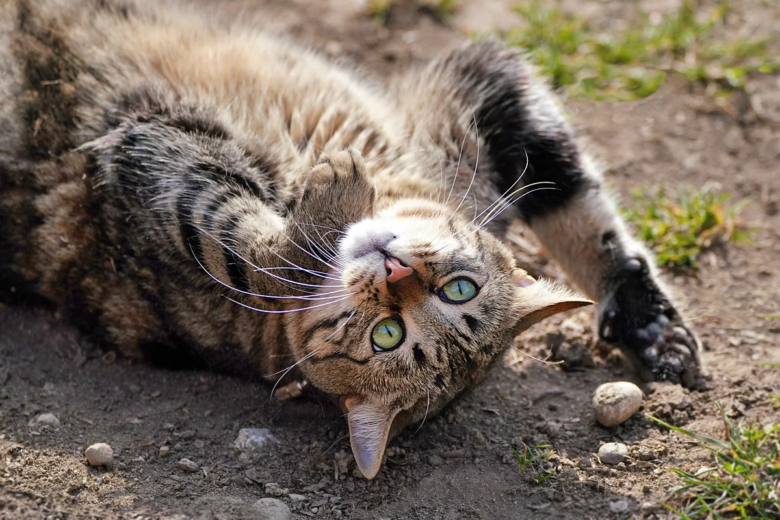Teaching a cat to pee in the litter can be a challenging task, but with patience and consistency, success can be achieved. Felines are naturally clean animals and are often attracted by the instinct to bury their waste. However, some cats may resist using the litter box for a variety of reasons.
Cats are territorial animals, and the litter box must be positioned in quiet and easily accessible places so that the cat feels comfortable using it. Also, make sure the box is always clean, as many cats avoid dirty places. Observe your cat’s behavior for signs of discomfort or aversion to the litter box, which could indicate health problems or behavioral issues.
By understanding these aspects, you will be better prepared to approach your cat’s training in an effective and personalized way.
1. Understanding Cat Behavior
Before beginning the teaching process, it is crucial to understand your cat’s natural elimination behavior. Cats are territorial animals, and the litter box must be positioned in quiet and easily accessible places so that the cat feels comfortable using it. Also, make sure the box is always clean, as many cats avoid dirty places.
Observe your cat’s behavior for signs of discomfort or aversion to the litter box, which could indicate health problems or behavioral issues. Understanding your cat’s individual preferences will allow you to choose the right litter box, making the training process more effective.
Choosing the right litter box, in addition to providing comfort to your cat, makes it easier to adapt to the new habit.
2. Choosing the Right Litter Box
Choosing the right litter box is essential to the success of training. Cats have individual preferences, and the texture of the litter, the size of the box and the presence or absence of a lid can influence the cat’s acceptance. Try different types of litter and boxes to discover your feline’s preferences.
If your cat has mobility issues, choose a box with lower sides for easier access. Gradually introduce the litter box and observe how your cat reacts, adjusting as needed. Understanding your cat’s preferences and adapting the litter box contribute significantly to the success of training.
Choosing a litter box carefully not only meets the cat’s needs, but also facilitates the process of adapting to the new environment.
2.1 Sand Texture
The texture of the sand is a crucial factor in choosing the right box. Some cats prefer finer litter, while others may like a grainier texture. Try different types of litter to determine your cat’s preference and ensure a comfortable experience.
Also, pay attention to how often you clean the litter box. Cats are more likely to use the box if it is clean, without excessive waste accumulation. Keep the box cool and sanitized to provide an attractive environment for your feline.
2.2 Box Size and Type
Box size and type also play an important role. Cats may have preferences regarding available space and the presence or absence of a lid. Choosing a box suited to your cat’s size and individual preferences will contribute to the acceptance and success of training.
Also, position the box in a quiet place that is easily accessible to the cat, avoiding busy or noisy areas. Ensuring the feline’s privacy during elimination is crucial so that it feels comfortable when using the litter box.
3. Gradual Training Strategies
Gradual training is essential when teaching a cat to pee in the litter. Start by positioning the litter box in an accessible and quiet location, avoiding frequent changes. If your cat is already urinating in unwanted places, place the box near those places. Positively reinforce when your cat uses the litter box by offering praise and rewards.
Avoid punishment as it can cause stress and resistance to training. If accidents occur, clean the area with specific products to eliminate the odor, preventing the cat from associating the area with elimination. The gradual training process requires patience and consistency, ensuring a smooth transition for the cat to adopt the litter box as the appropriate place for its needs.
By adopting a gradual approach, you allow the cat to get used to the new practice, minimizing stress and promoting a smoother transition.
3.1 Gradual Introduction to the Box
Gradually introduce the litter box into your cat’s environment. Initially place it in a familiar location and, as the cat gets used to it, move it to the desired location. This will reduce the feline’s discomfort with the change and increase the likelihood of acceptance of the box.
3.2 Adaptation to the New Texture
When trying different types of litter, be aware of your cat’s response. Some felines may prefer a specific texture, and adjusting litter choice during training may be necessary. Offer variety until you find the ideal texture that encourages regular use of the box.
3.3 Constant Monitoring and Adjustments
Closely monitor your cat’s behavior during training. Watch for any signs of discomfort or resistance, and be prepared to make adjustments as needed. Patience and constant attention to your cat’s needs are essential to ensure a successful training process.
4. Monitoring and Adapting Training
Closely monitor training progress and be alert for any signs of discomfort or resistance on your cat’s part. If necessary, consult a veterinarian to rule out health problems. Continue offering positive reinforcement as the cat adapts to using the litter box.
Be prepared to adjust your training strategy as needed, always remembering to remain calm and patient. Consistency and positivity are key to establishing lasting habits and ensuring your cat pees in the litter properly. Continuous monitoring and adapting to the cat’s needs are essential to the long-term success of training.




